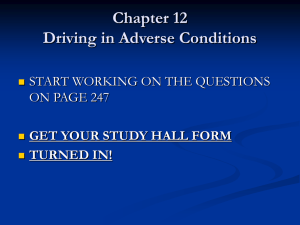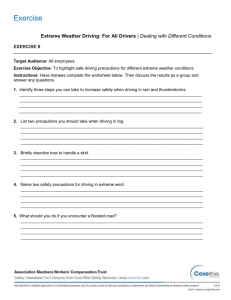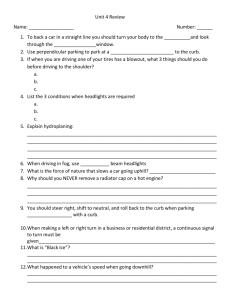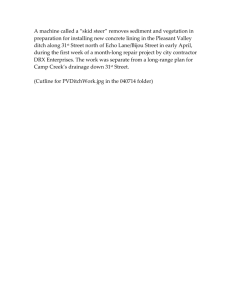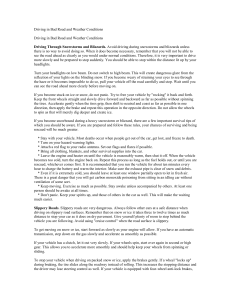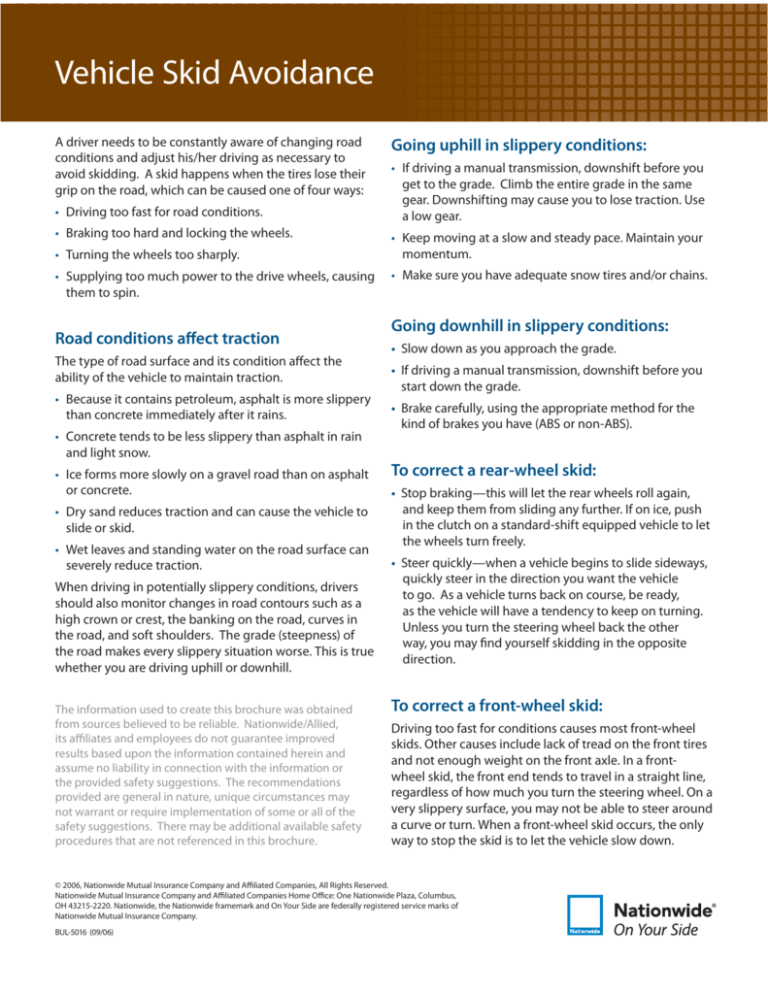
Vehicle Skid Avoidance
A driver needs to be constantly aware of changing road
conditions and adjust his/her driving as necessary to
avoid skidding. A skid happens when the tires lose their
grip on the road, which can be caused one of four ways:
• Driving too fast for road conditions.
• Braking too hard and locking the wheels.
• Turning the wheels too sharply.
• Supplying too much power to the drive wheels, causing
them to spin.
Road conditions affect traction
The type of road surface and its condition affect the
ability of the vehicle to maintain traction.
• Because it contains petroleum, asphalt is more slippery
than concrete immediately after it rains.
Going uphill in slippery conditions:
• If driving a manual transmission, downshift before you
get to the grade. Climb the entire grade in the same
gear. Downshifting may cause you to lose traction. Use
a low gear.
• Keep moving at a slow and steady pace. Maintain your
momentum.
• Make sure you have adequate snow tires and/or chains.
Going downhill in slippery conditions:
• Slow down as you approach the grade.
• If driving a manual transmission, downshift before you
start down the grade.
• Brake carefully, using the appropriate method for the
kind of brakes you have (ABS or non-ABS).
• Concrete tends to be less slippery than asphalt in rain
and light snow.
• Ice forms more slowly on a gravel road than on asphalt
or concrete.
• Dry sand reduces traction and can cause the vehicle to
slide or skid.
• Wet leaves and standing water on the road surface can
severely reduce traction.
When driving in potentially slippery conditions, drivers
should also monitor changes in road contours such as a
high crown or crest, the banking on the road, curves in
the road, and soft shoulders. The grade (steepness) of
the road makes every slippery situation worse. This is true
whether you are driving uphill or downhill.
The information used to create this brochure was obtained
from sources believed to be reliable. Nationwide/Allied,
its affiliates and employees do not guarantee improved
results based upon the information contained herein and
assume no liability in connection with the information or
the provided safety suggestions. The recommendations
provided are general in nature, unique circumstances may
not warrant or require implementation of some or all of the
safety suggestions. There may be additional available safety
procedures that are not referenced in this brochure.
To correct a rear-wheel skid:
• Stop braking—this will let the rear wheels roll again,
and keep them from sliding any further. If on ice, push
in the clutch on a standard-shift equipped vehicle to let
the wheels turn freely.
• Steer quickly—when a vehicle begins to slide sideways,
quickly steer in the direction you want the vehicle
to go. As a vehicle turns back on course, be ready,
as the vehicle will have a tendency to keep on turning.
Unless you turn the steering wheel back the other
way, you may find yourself skidding in the opposite
direction.
To correct a front-wheel skid:
Driving too fast for conditions causes most front-wheel
skids. Other causes include lack of tread on the front tires
and not enough weight on the front axle. In a frontwheel skid, the front end tends to travel in a straight line,
regardless of how much you turn the steering wheel. On a
very slippery surface, you may not be able to steer around
a curve or turn. When a front-wheel skid occurs, the only
way to stop the skid is to let the vehicle slow down.
© 2006, Nationwide Mutual Insurance Company and Affiliated Companies, All Rights Reserved.
Nationwide Mutual Insurance Company and Affiliated Companies Home Office: One Nationwide Plaza, Columbus,
OH 43215-2220. Nationwide, the Nationwide framemark and On Your Side are federally registered service marks of
Nationwide Mutual Insurance Company.
BUL-5016 (09/06)

